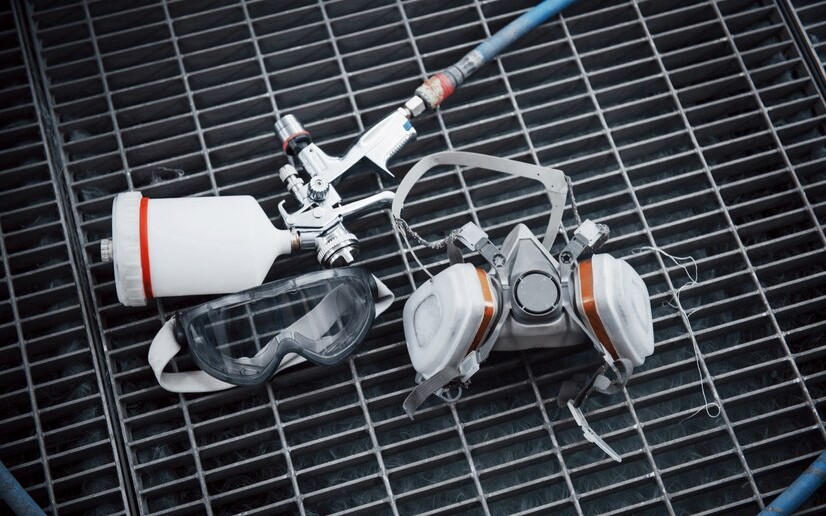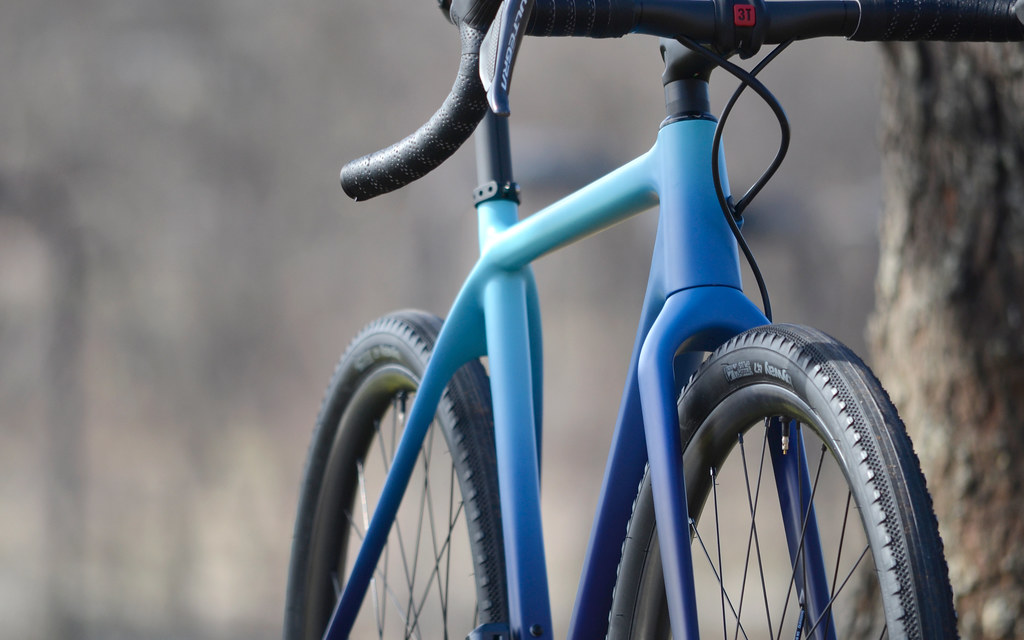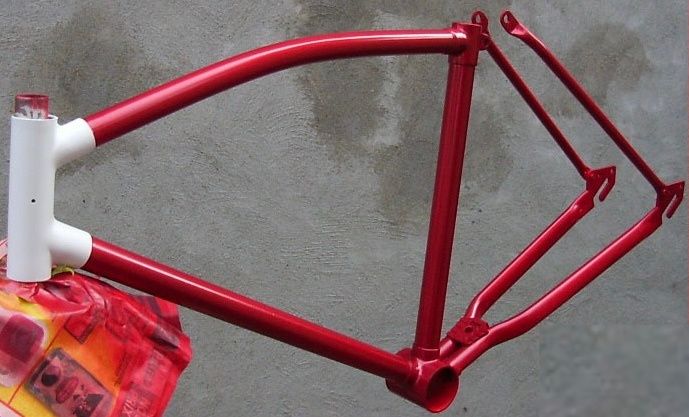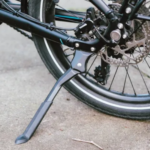Do you want to give your bike a makeover? Painting a bike is a fun and rewarding way to customize your ride, express your personality, and protect your bicycle from the elements. But how to paint a bike?
Whether you want to change the color, add some patterns, or create a masterpiece, painting a bike is easier than you think. In this blog post, I will show you how to paint a bike in seven simple steps, from disassembling the bicycle to reassembling it.
You will need some basic tools and materials, and a bit of creativity and patience. By the end of this post, you will be able to transform your bike into something unique and beautiful.
Let’s get started!
Preparing for Painting
Choose a well-ventilated and dust-free location to spray your bike. Ventilation prevents fume inhalation and dust ruins the paint finish.

Consider the weather and temperature for indoor or outdoor painting. Both affect the paint drying and curing. Hence, you must cover the floor and walls indoors and avoid wind and humidity outdoors.
Required Tools & Materials
- Wrench, Screwdriver, & Bike Adjustment Tools
- Container for Screws & Bolts
- Labeling Materials
- Blow Dryer or Heat Gun
- Low-Grit & High-Grit Sandpaper
- Gloves, Mask, & Goggles
- Painter’s Tape
- Wire or Rope for Hanging or Mounting
- Primer Spray Can or Spray Gun
- Clean Cloth for Wiping
- Chosen Paint (Enamel, Acrylic, Metallic, Matte, or Glossy)
- Clear Coat (Lacquer, Polyurethane, or Epoxy)
How to Paint a Bike Frame?
1. Disassemble the Bike
The first step is to take apart the bike so that you can paint the frame separately. You will need to remove the wheels, the cranks, the bottom bracket, the derailleurs, the chain, the brakes, the handlebars, the seat, and the forks from the bicycle frame.

To do this, you will need some tools such as a wrench, a screwdriver, a chain tool, and a pedal spanner. Make sure that you use the right tool for each part, and do not force or damage anything.
Label the parts and store the screws and bolts in a container so that you do not lose them. You can also take pictures or videos of the process to help you remember how to put them back later.
2. Remove the Old Paint
The next step is to remove the old color from the bicycle frame. This will help the new paint to stick better and look smoother. You will need to peel off any labels or decals from the bike frame using a blow dryer or a heat gun.
Then, you will need to sand the frame of the bicycle using a low-grit or a high-grit sandpaper depending on the type of paint on the frame. If the color is thick or glossy, use low-grit sandpaper to remove it.

If the paint is thin or matte, use a high-grit sandpaper to scuff it. Be careful not to scratch the metal or remove too much material. Wear gloves, a mask, and goggles to protect yourself from dust and fumes. Make sure the area is well-ventilated and dispose of waste properly.
3. Sand the Frame
The third step is to smooth out any rough spots or imperfections on the frame using fine-grit sandpaper. This will make the surface even and ready for the primer. You will need to wipe down the frame with a cloth and soapy water to remove any dust or residue.
Then, you will need to sand the frame with fine-grit sandpaper using circular motions. Do not over-sand or damage the metal. Using a clean cloth, dry the frame thoroughly.
4. Apply Primer
The fourth step is to apply primer on the frame. Primer is a special type of paint that prepares the surface for the final paint. It helps the paint to adhere better and prevents rust and corrosion.
You will need to tape off any areas of the frame that you don’t want to be painted, such as the posts for the brakes, the threads for the bottom bracket, the headset, etc.

Additionally, you will need to hang or mount the frame using a wire or a rope through the head tube. This will allow you to spray the primer on all sides of the frame without touching it.
Then, spray the primer on the frame using a spray can or a spray gun. Shake the can well before using it, and hold it at a distance of about 12 inches from the frame.
Use light and even strokes to cover the frame with primer. Apply multiple thin coats, and each coat must be dried before the next is applied. Follow the instructions on the can for the drying time and the number of coats.
5. Paint the Frame
The fifth step is to paint the frame with the color and type of paint that you have chosen. You can use enamel, acrylic, metallic, matte, glossy, or any other kind of paint that you like. Spray the paint on the frame using the same technique as the primer.
Test the paint on a scrap piece of metal before spraying it on the frame, and make sure that it matches your expectations. You can also use contrasting colors for accents, such as the lugs, the dropouts, the head tube, etc.
Avoid drips and runs by applying thin and even coats. Before spraying the next layer, let the previous one dry completely. Follow the instructions on the can for the drying time and the number of coats.
6. Apply Clear Coat
The sixth step is to apply a clear coat on the frame. A clear coat is a transparent layer of paint that protects the color and adds shine to the frame. It also makes the frame easier to clean and maintain.

You will need to choose the type of clear coat that is compatible with the paint that you have used, such as lacquer, polyurethane, epoxy, etc. Then, spray the clear coat on the frame using the same technique as the primer and the paint.
Apply multiple thin coats, and wait for each coat to dry before applying the next one. Follow the instructions on the can for the drying time and the number of coats.
7. Reassemble the Bike
The final step is to reassemble the bike with the parts that you have removed in the first step. You will need to reattach the forks, the seat, the handlebars, the brakes, the chain, the derailleurs, the bottom bracket, the cranks, and the wheels to the bicycle frame.
Use the right tools, and tighten the bolts and screws securely. Adjust the brakes and gears, and make sure that everything works properly. You can also refer to the pictures or videos that you have taken in the first step to help you remember how to put them back.
How to Care for a Painted Bike?
Painting a bike can make it look more attractive and personalized, but it also requires some care and maintenance to keep it in good condition. Some common mistakes to avoid during the painting process are using incompatible paints and clear coats, applying too much or too little paint, and not letting the paint dry completely.

These can result in cracking, peeling, fading, or chipping of the paint. To prevent these problems, you should follow the instructions on the paint cans, use the right tools and techniques, and work in a suitable environment.
If you notice any minor damage or wear on the paint over time, you can use a touch-up pen or spray to fix it. You should also clean your bicycle regularly with a soft cloth and mild soap, and avoid exposing it to harsh weather or chemicals. By following these tips, you can enjoy your painted bike for a long time.
Conclusion
Transforming your bike with a fresh coat of paint is a rewarding journey, allowing you to express your style and protect your ride. In this step-by-step guide, I have covered everything from disassembling to reassembling, ensuring your bicycle becomes a unique masterpiece.
Remember to choose the right tools, follow proper techniques, and maintain a suitable environment. I hope now you have learned how to paint a bike frame at home.
Now, let your creativity run wild and get started with your project. Your comments and experiences will be appreciated in the comments section below.
FAQs
Mask critical parts, cover components, and use a spray gun for even coats without disassembly.
Yes, but it may not be as smooth or even as spray paint. Use high-quality paint and a fine brush.
It depends on the quality and aesthetics. A well-done paint job may enhance value.
It can be simple, but it requires time and patience. Follow the steps of preparing, painting, and drying the bike.



